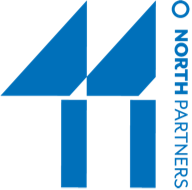After the final wording was approved on July 4, a handwritten copy was sent to the printing shop of John Dunlap, which overnight printed about 200 broadsides for distribution. In the days and weeks that followed, the Declaration was read to audiences and reprinted in newspapers across the 13 states.
Fast forward to the business climate of 2016: Like the delegates in 1775, today’s C-level executives are expected to be enlightened and courageous leaders who, despite a turbulent world, create a sustainable vision of their organization’s future. However, as they navigate unprecedented challenges and juggle expanding roles and responsibilities, the demands on the C-suite have never been greater.
In KPMG’s 2016 U.S. CEO Outlook Report, 69% of the CEOs surveyed said they are “concerned by the number of mission-critical issues that they have not grown up with or experienced previously in their careers that now require their leadership.” In addition, today’s CEO is expected to be change agent, coach, customer champion, company storyteller and more, all rolled into one.
And it’s not just the CEO role that’s transforming. More is expected of every C-level leader. No longer just functional heads, these executives are critical partners in guiding enterprise strategy and anticipating future talent needs. In fact, Fast Company predicts the advent of new C-level roles, including Chief Officers focused on Ecosystem, User Experience, Data, Privacy and Freelance Relationships, to name a few.
With technology, social activism, economic disparity and globalization disrupting business models and testing the capabilities, confidence and composition of the 21st century C-suite, strategic communication is essential to driving positive business results. It provides clarity, ensures alignment of decisions and actions, fosters trust and protects and preserves organizational culture. And, just as America witnessed with the broad dissemination of the Declaration in its earliest days, effective communication unifies and integrates people and processes in support of a clear purpose and direction. Making communication a strategic priority is, and always has been, an undeniable truth of great leadership.
